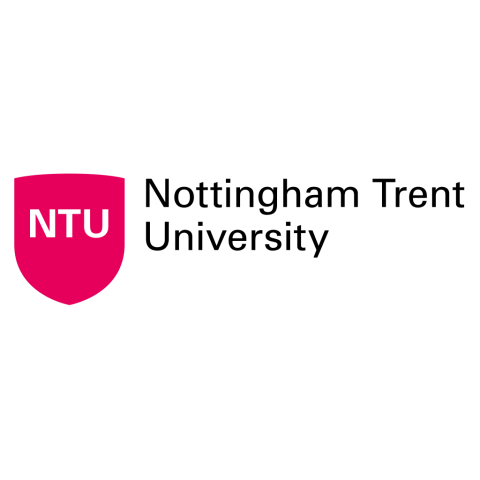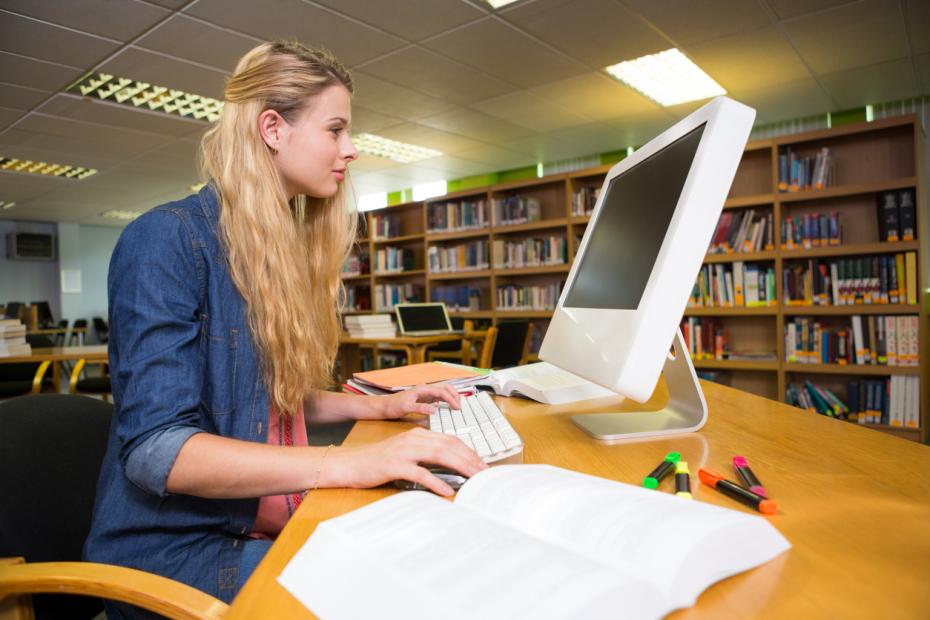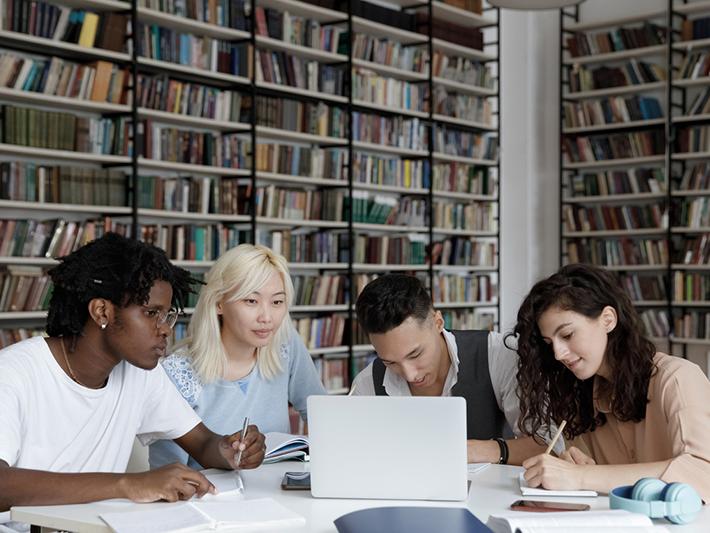
What does the future hold for library spaces?
University libraries are evolving fast. From inclusive design to sustainability, here’s how institutions can rethink spaces to support future learners and diverse needs
The university library is often referred to as the heart of the campus, but long gone are the days of card catalogues, dusty subterranean stacks and enforced silence. The growth of the internet, self-service equipment, the proliferation of student-owned devices and the explosion of artificial intelligence (AI) have changed the library landscape and forced us to reconsider how people will use these spaces. The Covid pandemic accelerated this shift, with many organisations leaving print collections behind and speeding towards a digital future.
Social, economic, technological and environmental trends will influence what, how and where our students will learn, now and in the future. With student expectations high, universities must balance delivering an outstanding student experience, maximising recruitment and being financially sustainable in a time of financial uncertainty. Libraries have an important role to play in their success.
Universities must draw up a road map for how they will get there, actively seeking co-creation opportunities with their users.
Create designated zones
We should provide spaces that recognise and respond to hybrid study patterns, support online activity in physical spaces and enable students to use their own devices. Furniture should be easy to move around and layouts easy to reconfigure. Designated zones should cater to different learning styles, with areas for focus and quiet study including individual enclosed pods, as well as spaces dedicated to group work.
New uses for library spaces
The reduction of print collections releases spaces and provides opportunities. Leverage the high-profile, central locations and long opening hours of library buildings to co-locate other student-facing services such as IT support and converged help desks.
With growing pressures on student well-being, libraries must work in partnership with other student support services to offer an environment that boosts physical and mental health, and activities that promote relaxation, such as yoga, craft sessions or reading for pleasure.
- How to put joy at the centre of the university library
- Building a university library service where everyone feels welcome
- Redefining the university library for 2025 and beyond
The library’s role in promoting inclusion
Libraries must reflect the diverse needs of their users and help them overcome barriers by providing inclusive and accessible spaces. Cater to neurodivergent students by incorporating sensory lighting and furniture such as rocking chairs and fidget toys, which support self-soothing through repetitive behaviours (stimming). Provide inclusive guides including video tours of spaces and sensory maps, so that users know what to expect from library spaces. Make all areas more inclusive, for example by having a central pool of assisted technology available, such as adaptive keyboards and mice, which can be used in any part of the building.
Respond to the needs of international and marginalised students by decolonising spaces, assessing the diversity of collections and artwork and making changes to reflect a wider range of voices and experiences.
Foster collaboration and community
In a future where AI may reduce the need for technical knowledge, employers will increasingly value interpersonal, critical thinking and problem-solving skills. Establish spaces that promote collaboration, peer learning and idea-sharing to help students form connections, including dedicated group study and social seating areas to facilitate peer interaction and social learning. Multipurpose spaces such knowledge cafes can be used for academic skill development activity as well as cultural and well-being events.
We should also seek opportunities to connect to our wider communities by hosting public-facing events and facilities and form partnerships with external organisations such as community groups and schools to attract more visitors. Look into hosting events such as book launches, poetry readings, science festivals or art exhibitions.
Support experimentation, innovation, entrepreneurship and skills development
Libraries should leverage technology-rich spaces to support learning, creativity, research and entrepreneurship. Nurture an environment that fosters skill development and supports academic success and employability. Introduce maker spaces with equipment such as 3D printing and laser cutting to support prototyping, and media production facilities to support activities such as podcasting.
Build a sustainable future
As buildings with a large footprint and extended opening hours, libraries must embrace sustainability. The 17 United Nations Sustainable Development Goals provide a useful framework to refocus our thinking. Libraries must prioritise reducing their environmental impact, prioritising sustainable materials and design choices, for example by switching to low-energy lighting or seeking alternatives to fossil fuels through switching to biomass boilers or renewable power generation.
We should scrutinise the carbon emissions of our supply chain and make sustainable procurement decisions, choosing low-energy equipment and sustainable furnishings to reduce our environmental impact. We should promote initiatives to reduce energy usage and waste, for example, we should review our processes to reduce unnecessary printing, and raise our users’ awareness of how to reduce waste at university and in their personal lives. We must think differently about opening hours and 24/7 services, making evidence-based decisions and responding to peaks and troughs of demand.
It is time to think differently about our spaces and develop strategies to ensure university libraries remain a student destination of choice.
Kate Marshall is the head of user experience and environment for libraries and learning resources at Nottingham Trent University.
If you would like advice and insight from academics and university staff delivered direct to your inbox each week, sign up for the Campus newsletter.





